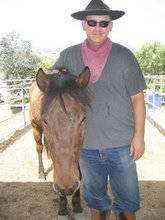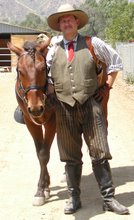
I pulled out this game this weekend to play. Truely a relic of the 80s...
First impressions: It's trying to be the Central Front Series on a bit larger scale. The map graphics are ghastly in that early 80s style (Redmond A. Simonson, it's NOT). Also, the order of battle for NATO is somewhat questionable (TWO US cavalry companies to cover the border? What happened to the others? Go on leave to Paris?) and the rules are a bit ambiguous in places.
Drive on Frankfurt also attempts to use a flexible impulse system based on command activation. What's interesting is this is the first game I've seen that really attempts to integrate the effects of ECM into the game so that command, and in turn your ability to move units, can be dramitically affected by jamming.
Follow-up:
I've been trying to soldier through the first turn of Drive on Frankfurt but no joy. The system is an interesting one but it's just a tad too cumbersome and especially in terms of multi-unit attacks. The rules are a bit unclear on this point since they seem to emphasize individual movement of each unit or stack in an activated group. If you move one unit, you need to keep track of it's expended movement while moving a second unit up to also attack the same defender. Then you have to make sure that each unit has enough movement points to pay for the appropriate attack (there's three levels of attack: assault, deliberate and hasty). Finally, if the attackers succeed, they then get to use their unexpended movement to advance further. This is way too much to keep in your head.
The artillery rules are also a bit ponderous with a separate "bombardment" phase and THEN being able to use bombardment during an activation phase. Then there's the spotter rules. A bit too tactical in my book.
This system definately needed some refining and compared to the Central Front Series, Drive on Frankfurt is a distant second.
First impressions: It's trying to be the Central Front Series on a bit larger scale. The map graphics are ghastly in that early 80s style (Redmond A. Simonson, it's NOT). Also, the order of battle for NATO is somewhat questionable (TWO US cavalry companies to cover the border? What happened to the others? Go on leave to Paris?) and the rules are a bit ambiguous in places.
Drive on Frankfurt also attempts to use a flexible impulse system based on command activation. What's interesting is this is the first game I've seen that really attempts to integrate the effects of ECM into the game so that command, and in turn your ability to move units, can be dramitically affected by jamming.
Follow-up:
I've been trying to soldier through the first turn of Drive on Frankfurt but no joy. The system is an interesting one but it's just a tad too cumbersome and especially in terms of multi-unit attacks. The rules are a bit unclear on this point since they seem to emphasize individual movement of each unit or stack in an activated group. If you move one unit, you need to keep track of it's expended movement while moving a second unit up to also attack the same defender. Then you have to make sure that each unit has enough movement points to pay for the appropriate attack (there's three levels of attack: assault, deliberate and hasty). Finally, if the attackers succeed, they then get to use their unexpended movement to advance further. This is way too much to keep in your head.
The artillery rules are also a bit ponderous with a separate "bombardment" phase and THEN being able to use bombardment during an activation phase. Then there's the spotter rules. A bit too tactical in my book.
This system definately needed some refining and compared to the Central Front Series, Drive on Frankfurt is a distant second.










No comments:
Post a Comment